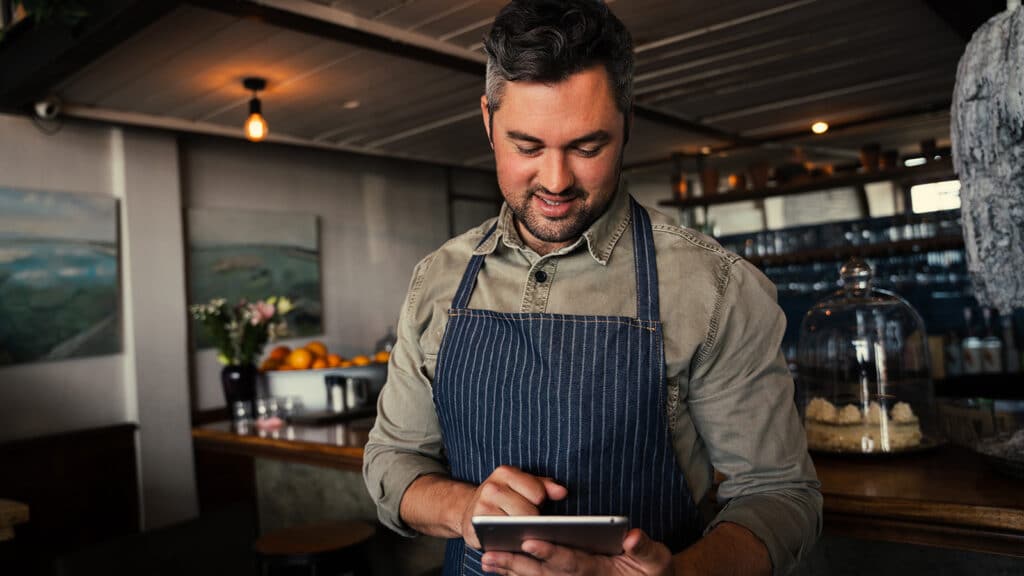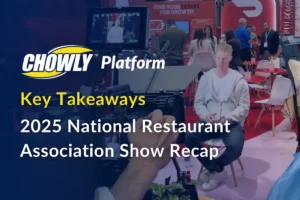A topic that I’ve been thinking a lot about lately is re-connecting to the foundational principles of the restaurants that we support at Chowly and that I love as a consumer. It’s great food and an awesome customer experience. As the industry is going more toward digital and off-premise, we’re seeing a shift in the tactics used by restaurants to ensure they’re still providing these 2 key ingredients to their patrons.
Now, there are plenty of articles, both positive and negative, about food quality in delivery. But for now, I want to focus on the other pillar of restaurant’s success: the guest experience.
In the past, restaurateurs would spend time and money designing the inside of their stores. Big build outs, cool art on the walls, or sleek views into the kitchen so guests could feel like they were part of the action. Every restaurateur wanted this experience to be unique to their brand.
There was also a greater emphasis on staff. You can read any Google or Yelp review and you’ll find that service, over and above food, tended to be a deciding factor in whether a 1 or 5 star review was left. While it may seem like efficiency is king above all else, customers still care a great deal about quality service. Finding great staff has always been (and still is) one of the greatest challenges of running a restaurant, but great restaurants know that if they solve for this, it’s like magic.
So if you break this down, it’s a unique visual feel and a pleasant human interaction. Well. If you’re providing a delivery order through DoorDash. How in the f*** do you ensure that experience to your customer? The food has left your 4 walls, most of the process is out of your control: you can’t control the weather, you can’t control the traffic, and most importantly, you can’t control the driver. And guess what? That person – the delivery driver – is the only human that’s going to directly interact with your customer. This driver likely didn’t even know your restaurant existed, let alone aware of your brand’s experience. In the event of a negative interaction between delivery driver and customer, there’s little to no accountability, and the restaurant has minimal recourse.
This isn’t new by the way. It’s been like this since delivery started. It was a common objection many restaurants had when third-party delivery started. That discussion however, is for another post.
The problem I want to focus on here is… How does a restaurant maintain its brand and guest experience for an order that occurs so far away from the restaurant?
To solve this, we don’t have to look far. In our personal lives, we’re already doing this. We’re creating connections and experiences with each other that are entirely digital. We interact through texting each other. We share memes that we created or saw on various social platforms. We check up on each other in a DM if we see a post indicating that something went wrong in a friend’s life. If we apply some of these concepts to the exchange with guests, there’s a lot we can learn.
Here are a couple of examples that I’ve seen and enjoyed as a consumer.
Harley’s Hot Dogs in Littleton, CO has a loyalty program that has no points. It has no rewards. And you have to give them your cell phone number to join it. So why do people join? Because the owner, Harry, sends out a dad joke every single Monday morning (which is on brand, because Harry is funny as hell if you run into him in the restaurant). This keeps me connected to his brand and keeps it top of mind so when I’m in town, a post-bar stop for a [insert crazy menu item] is something I do. Now, it also helps that he’s literally been one of the highest rated restaurants in Colorado on Yelp for nearly a decade. But you can see why when you experience his guest experience both inside the restaurant and just as important, outside the restaurant.
Then there is a Thai restaurant in Chicago that includes cute small plastic toys in all their delivery orders. When I order from there, it’s like getting an adult happy meal! Another that comes to mind is Ike’s Sandwiches, which has a modifier on every sandwich they sell: they ask if you want a lolly pop as an homage to the owner, Ike, who sports a bald head.
These groups are creating an “experience” in both the physical and the digital world and both the on and off premise worlds. This creates repeat customers, which we all know is critical to the success of any restaurant group.
This was actually one of the driving factors in Chowly’s acquisition of Koala. Koala provided an amazingly customized experience for large brands. While the software was the same, they could support 2 completely different and unique digital presentations of the brand. Mod Pizza and PF Changs, as different as they look, are the same software. This was an option we didn’t see for operators who weren’t in the enterprise space and we wanted to bring this to the SMB space so that operators of all sizes could provide this experience. This was a lot of the original inspiration for Chowly’s Online Ordering product.
As the consumer demands change, restaurants need to adapt as well. A larger and larger share of their business will be digital and off premise. Every year. You can count on it. The successful brands will be thoughtful in how their consumers experience their brands, both online and offline.



